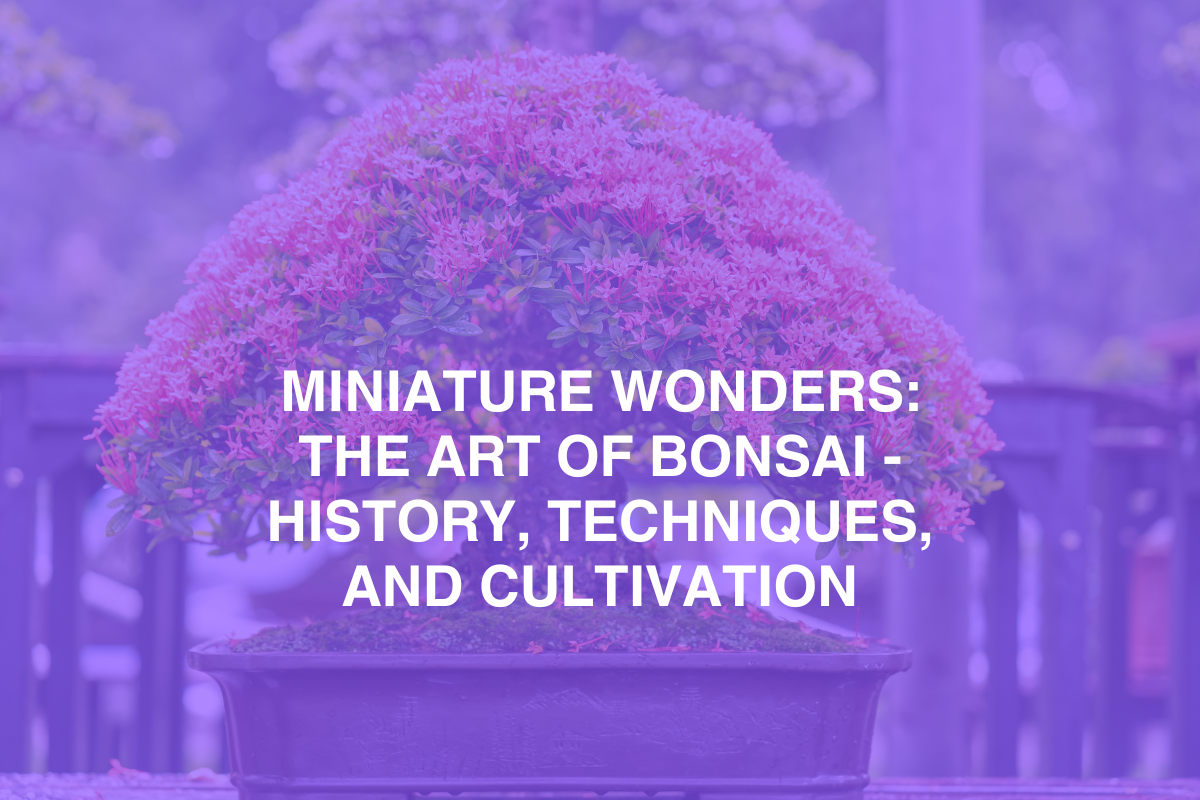Miniature Wonders: The Art of Bonsai - History, Techniques, and Cultivation
By~ Scholar Planet
Created At: 27 Aug, 2023

The art of bonsai is a
captivating blend of horticulture and artistic expression, offering a glimpse
into the beauty of nature distilled into miniature form. Originating from
ancient China and later refined in Japan, bonsai has captured the imagination
of enthusiasts worldwide. In this article, we delve into the rich history,
intricate techniques, and careful cultivation that make up the fascinating
world of bonsai.
History of Bonsai:
Bonsai's roots trace back over a
thousand years to ancient China, where miniature landscapes were cultivated in
containers. These artistic expressions were known as "pun-sai" or
"penzai," which translates to "tray planting." As the
practice spread to Japan, it evolved into what we now recognize as bonsai. The
Japanese word "bonsai" means "planted in a container,"
reflecting the essence of the art.
Techniques of Bonsai:
Bonsai involves several
techniques that transform ordinary trees and shrubs into living masterpieces.
Some of the most essential techniques include:
1. Pruning: Pruning is crucial
for maintaining the desired shape and size of the bonsai. Regular trimming of
branches and foliage encourages growth in specific directions, creating a
harmonious silhouette.
2. Wiring: Wiring allows artists
to shape branches and trunks by gently bending them into desired positions.
This technique requires careful consideration of the tree's growth patterns and
responsiveness to avoid damaging the delicate branches.
3. Repotting: Bonsai trees need
to be re-potted periodically to provide fresh soil and maintain healthy root
systems. During repotting, roots are pruned and repositioned, promoting proper
growth and preventing root-bound plants.
4. Defoliation: This advanced
technique involves removing a tree's leaves to encourage smaller foliage and
enhance the illusion of a mature, full-sized tree. Defoliation should be
approached cautiously and in sync with the tree's growth cycle.
Cultivation of Bonsai:
Cultivating a bonsai tree is a
patient and rewarding endeavour. The following steps offer insight into
successful bonsai cultivation:
1. Species Selection: While
various species can be used for bonsai, certain trees and shrubs are better
suited due to their size, growth patterns, and adaptability to pruning and
shaping. Common choices include junipers, maples, pines, and ficus.
2. Container Choice: The choice
of container, or "pot," plays a pivotal role in the aesthetics of the
bonsai. The pot should complement the tree's size, style, and overall design,
enhancing its visual appeal.
3. Soil Mix: Bonsai require
well-draining soil to prevent root rot and ensure healthy growth. A balanced
soil mix that provides essential nutrients and proper aeration is essential.
4. Light and Water: Bonsai trees
need adequate light for photosynthesis. The light requirements vary depending
on the species, so it's essential to research the specific needs of your chosen
tree. Regular watering, with attention to the tree's moisture requirements, is
also vital for its well-being.
5.
Patience and Pruning: Bonsai cultivation requires patience and consistent care.
Regular pruning, wiring, and repotting help maintain the desired form and size
of the tree over time.
